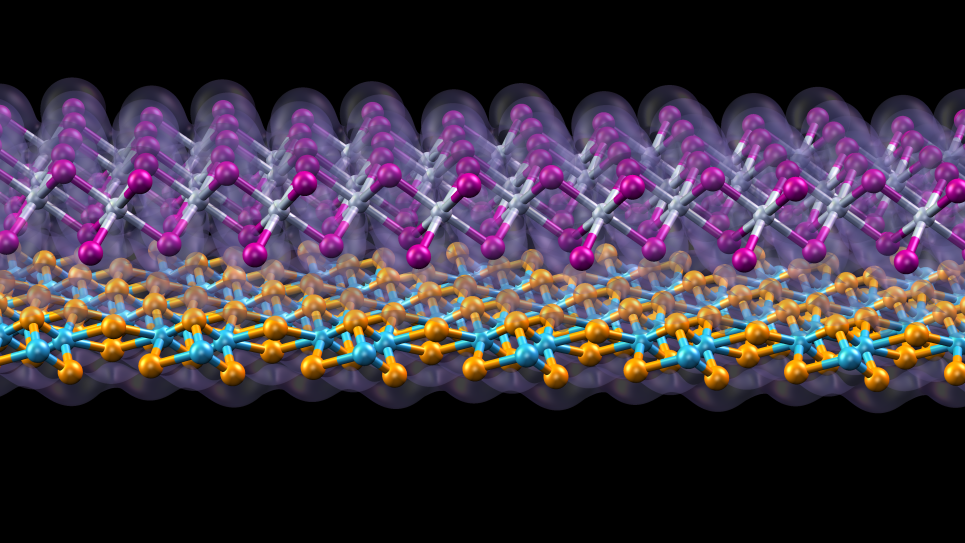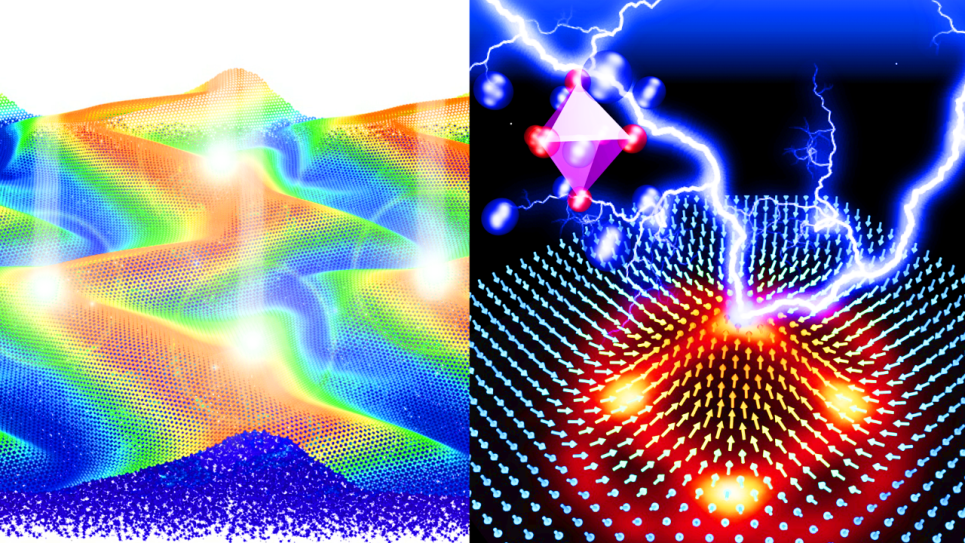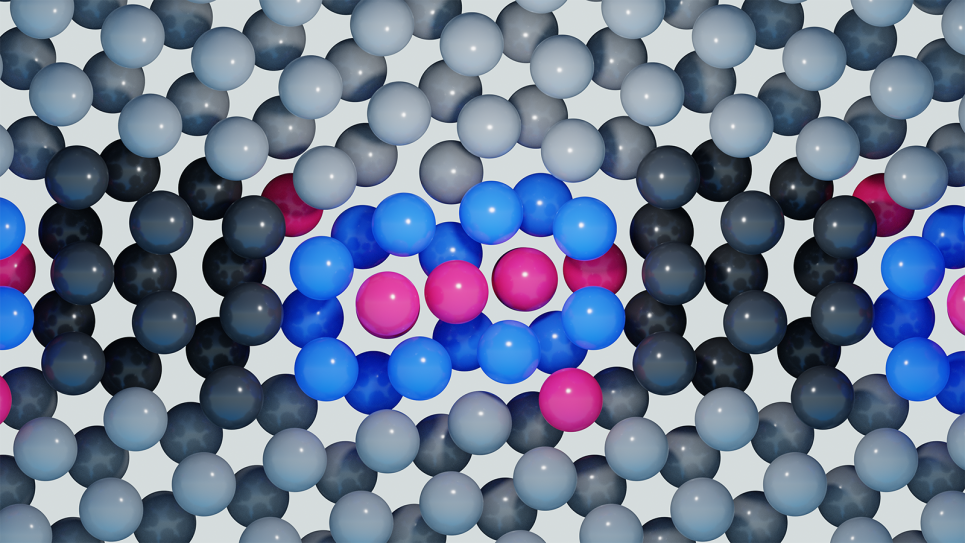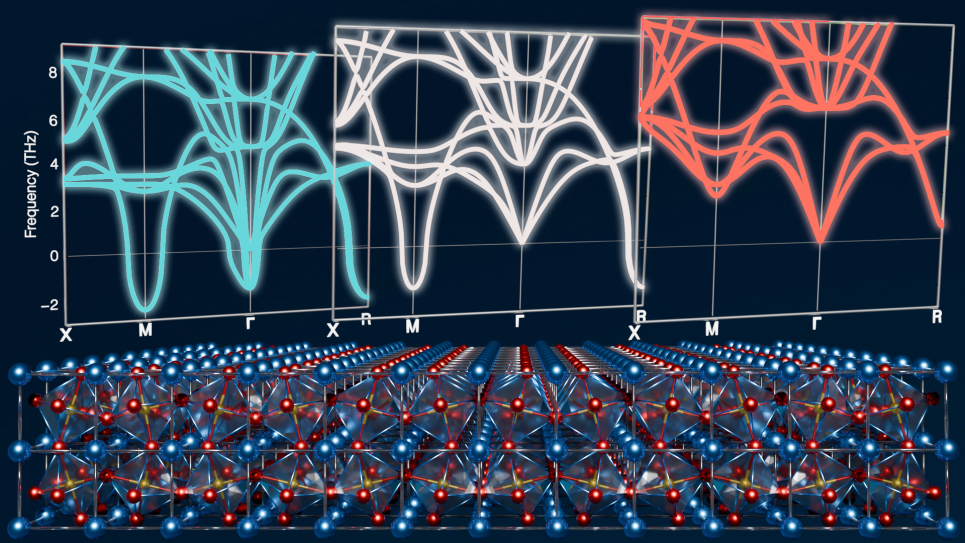
Calculated electronic charge density of a CrI3/WTe2 bilayer, a candidate topological spin filter. The calculations were made using data from “A First-Principles Study of Bilayer 1T'-WT2/CrI3: A Candidate Topological Spin Filter” (D. Staros, B. Rubenstein, and P. Ganesh. NPJ Spintronics 2 4 (2024). https://doi.org/10.1038/s44306-023-00007-y). Image: QMCPACK Team


